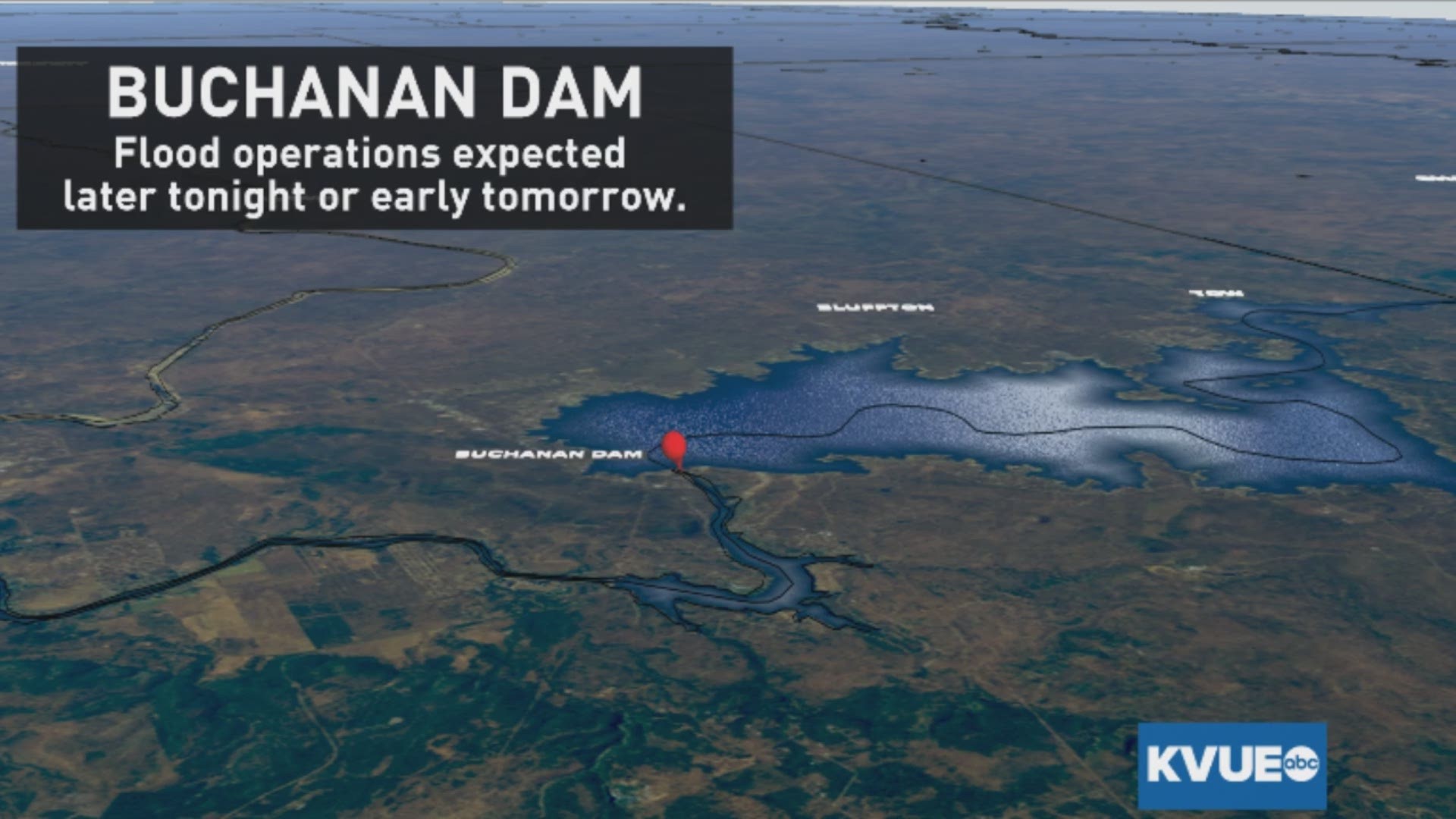CENTRAL TEXAS — The Highland Lakes, their flows and storage units are extremely important to the Hill Country and Austin metro.
Lakes Travis and Buchanan -- the region's water supply reservoirs -- hold 1,774,516 acre-feet of water according to the Lower Colorado River Authority. These provide water supply to more than 1 million people as well as businesses, industries, agriculture and countless communities.
RELATED:
To provide some background, the Lower Colorado River Authority (LCRA) is combined of six dams in Central Texas. These include Buchanan, Inks, Wirtz, Starcke, Mansfield, and Tom Miller. They serve six Highland Lakes: Buchanan, Inks, LBJ, Marble Falls, Travis and Austin.
It goes without saying that these dams and reservoirs help manage flooding and generate hydroelectric power. Together, according to the LCRA, the hydroelectric plants can provide more than 295 megawatts of power.
Let's explore the dams and reservoirs in order of their flow and operations west to east.
Lake Buchanan and Buchanan Dam
Created in 1938, it serves Burnet and Llano counties and its primary purposes include hydroelectric power and water supply.
Inks Dam and Inks Lake
Created in 1938, it serves Llano and Burnet counties and its primary purpose is water supply. Inks Dam has no floodgates and is the smallest of the lakes. This is the smallest power plant of the Highland Lakes.
Wirtz Dam and Lake LBJ
Also serving Llano and Burnet counties, it was created in 1951 and its purpose includes serving hydroelectric power and serving as a cooling reservoir for the Thomas C. Ferguson Power Plant.
Starcke Dam and Lake Marble Falls
The smallest dam of the Highland Lakes, it was created in 1951 and serves Burnet County. This was the last dam to be completed of the Highland Lakes.
Mansfield Dam and Lake Travis
Created in 1942, it is used for flood management, water storage supply and hydroelectric power. It serves Travis and Burnet counties within the Austin metro area. This lake is critical to the flow of the Highland Lakes and is specifically designed to hold floodwaters. It is designed to hold an addition 787,000 acre-feet of floodwaters in what LCRA refers to as a flood pool.
Tom Miller Dam and Lake Austin
This serves the City of Austin within Travis County and completed in 1940. Its primary purpose is hydroelectric power and water supply.

